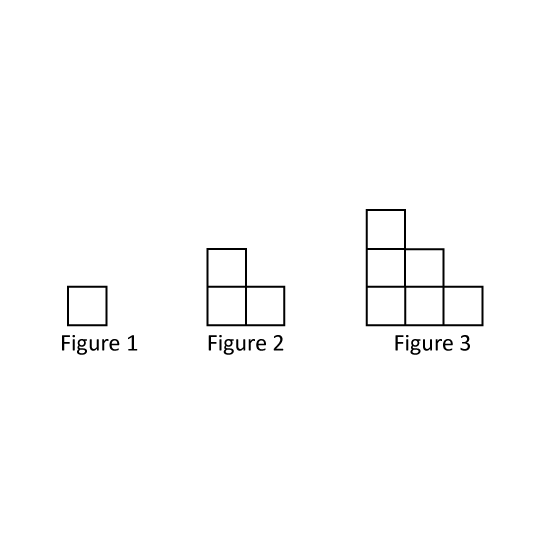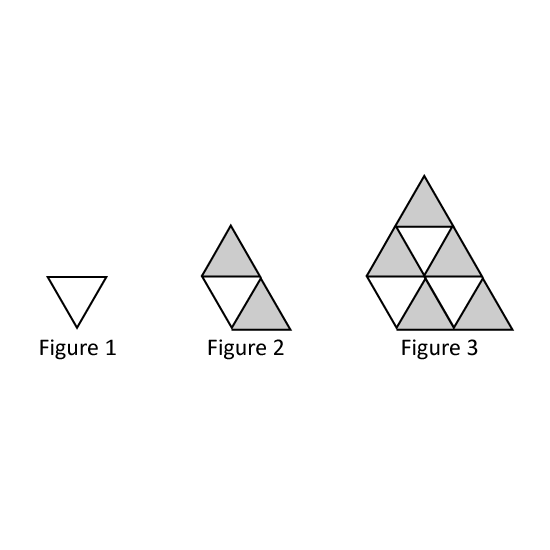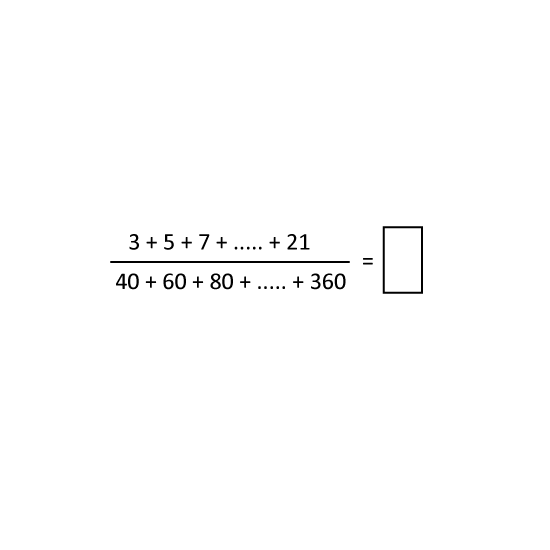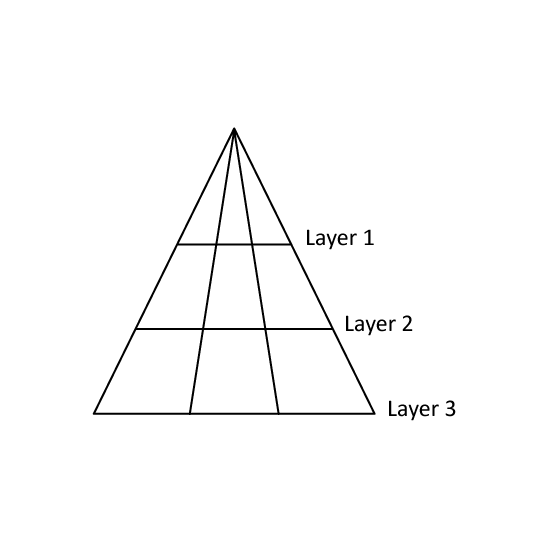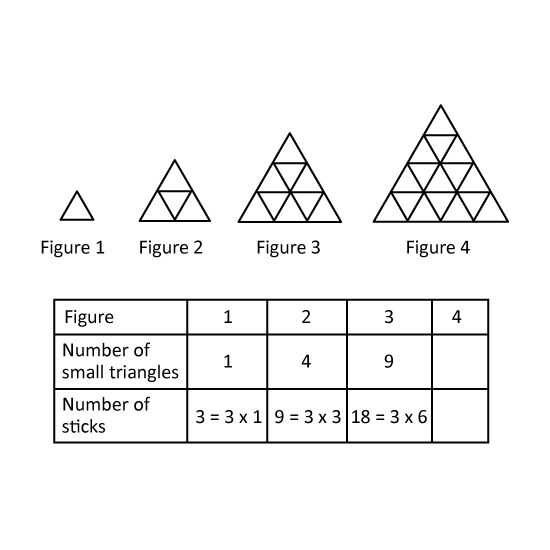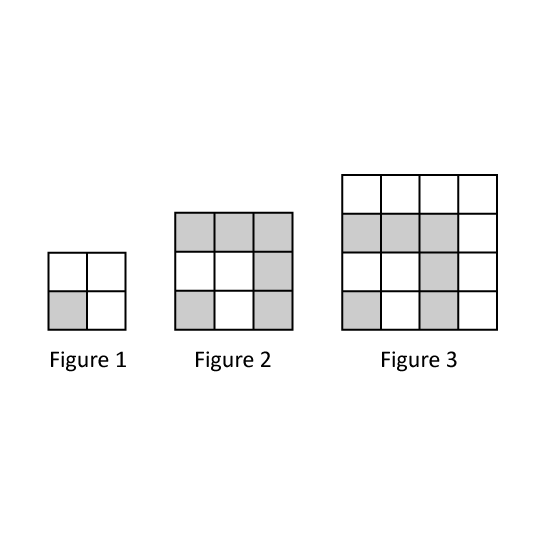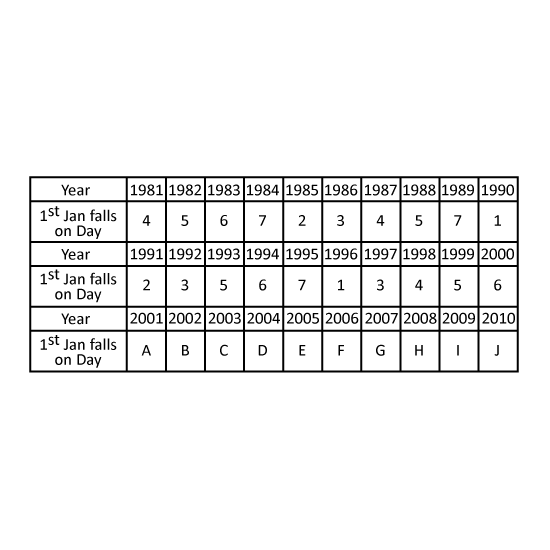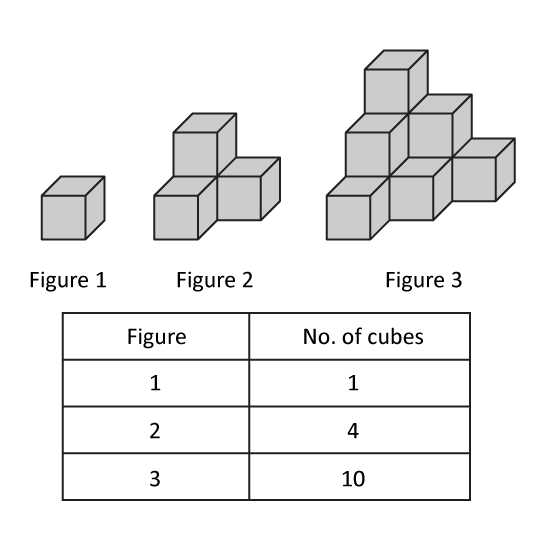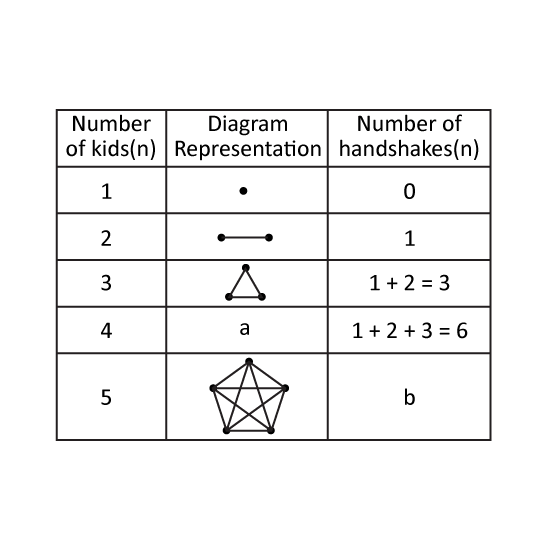Level 3
The diagram shows the first three figures in a sequence of squares with shaded patterns. For each figure, a mathematical pattern is expressed as the following.
Figure 1: 1 + 3 = 4 = 2 x 2 total squares
Figure 2: 1 + 3 + 5 = 9 = 3 x 3 total squares
Figure 3: 1 + 3 + 5 + 7 = 16 = 4 x 4 total squares
- How many white squares are there in Figure 6?
- How many white squares are there in Figure 10?
- Find the sum of 1 + 3 + 5 + 7 +
...
+ 39.
Level 3
The diagram shows the first three figures in a sequence of squares with shaded patterns. For each figure, a mathematical pattern is expressed as the following.
Figure 1: 1 + 3 = 4 = 2 x 2 total squares
Figure 2: 1 + 3 + 5 = 9 = 3 x 3 total squares
Figure 3: 1 + 3 + 5 + 7 = 16 = 4 x 4 total squares
- How many white squares are there in Figure 6?
- How many white squares are there in Figure 10?
- Find the sum of 1 + 3 + 5 + 7 +
...
+ 39.

